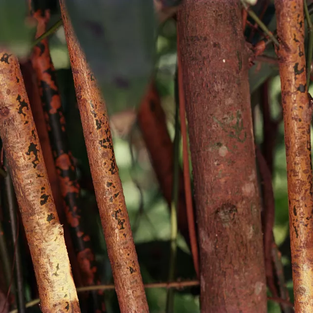Spices, Roots, Trees and Kaddish D'Rabanan
- Leann Shamash

- Mar 8, 2020
- 2 min read
There are a number of kaddishes at the conclusion of the service.
I'm focusing in on one today.
Lots to learn from it.
Let's start by saying why I'm interested.
Two reasons....
1. Anything to do with plants is of interest to me.
2.The passage of Pittum HaKetoret is read before a special kaddish on Shabbat mornings and also during the week at the conclusion of the service before a Kaddish D'rabanan is recited. The Torah (Shemot 30:34-36) instructs that incense must be offered as part of the daily service. (from Rabbi David Brofsky from etzion.org.il)
After the section in the liturgy that is in the form of a brief Rabbinic discourse, the older, school version of the Kaddish is recited. This contains a prayer for the well-being of students of the Torah and hence is known as Kaddish De-Rabbanan (‘Kaddish of the Rabbis’). (Taken from myjewishlearning.com
Little did I know that each word must be read scrupulously of this portion, on pain of the death penalty! I also learned that it many synagogues the portion is not read on weekdays because people may be in a rush and prone to make an error when reciting this portion of the learning. (from Rabbi David Brofsky from etzion.org.il)
Pittum Ha-ketoret (The Incense Recipe) by Rav David Brofsky from etzion.org.il
The Torah (Shemot 30:34-36) instructs that incense must be offered as part of the daily service. (text taken from Sefaria.org
וַיֹּאמֶר֩ יְהוָ֨ה אֶל־מֹשֶׁ֜ה קַח־לְךָ֣ סַמִּ֗ים נָטָ֤ף ׀ וּשְׁחֵ֙לֶת֙ וְחֶלְבְּנָ֔ה סַמִּ֖ים וּלְבֹנָ֣ה זַכָּ֑ה בַּ֥ד בְּבַ֖ד יִהְיֶֽה׃And the LORD said to Moses: Take the herbs stacte, onycha, and galbanum—these herbs together with pure frankincense; let there be an equal part of each.
וְעָשִׂ֤יתָ אֹתָהּ֙ קְטֹ֔רֶת רֹ֖קַח מַעֲשֵׂ֣ה רוֹקֵ֑חַ מְמֻלָּ֖ח טָה֥וֹר קֹֽדֶשׁ׃Make them into incense, a compound expertly blended, refined, pure, sacred.
וְשָֽׁחַקְתָּ֣ מִמֶּנָּה֮ הָדֵק֒ וְנָתַתָּ֨ה מִמֶּ֜נָּה לִפְנֵ֤י הָעֵדֻת֙ בְּאֹ֣הֶל מוֹעֵ֔ד אֲשֶׁ֛ר אִוָּעֵ֥ד לְךָ֖ שָׁ֑מָּה קֹ֥דֶשׁ קָֽדָשִׁ֖ים תִּהְיֶ֥ה לָכֶֽם׃Beat some of it into powder, and put some before the Pact in the Tent of Meeting, where I will meet with you; it shall be most holy to you.
וְהַקְּטֹ֙רֶת֙ אֲשֶׁ֣ר תַּעֲשֶׂ֔ה בְּמַ֨תְכֻּנְתָּ֔הּ לֹ֥א תַעֲשׂ֖וּ לָכֶ֑ם קֹ֛דֶשׁ תִּהְיֶ֥ה לְךָ֖ לַיהוָֽה׃But when you make this incense, you must not make any in the same proportions for yourselves; it shall beheld by you sacred to the LORD.(T
What were the ingredients of the Pittom Ketoret?
1) balsam,
(2) onycha,
(3) galbanum [chelbena],
(5) myrrh,
(6) cassia,
(7) spikenard,
(8) saffron — each weighing sixteen maneh;
(9) costus — twelve maneh;
(10) aromatic bark — three; and
(11) cinnamon — nine.
Cinammon Balsalm Onycha
Spikenard Myrrh Frankincense
Cassia Saffron Galbanum
Costis Aromatic Bark
I will write more on each of the uses of these different herbs, spices, roots and flowers in a few days but for now I wanted to be able to better visualize what they herbs look like and how they differ from one another.
One final note for today and that is that I believe that the aromatic bark that is mentioned is cinnamon but of this I am not sure.






















Comments